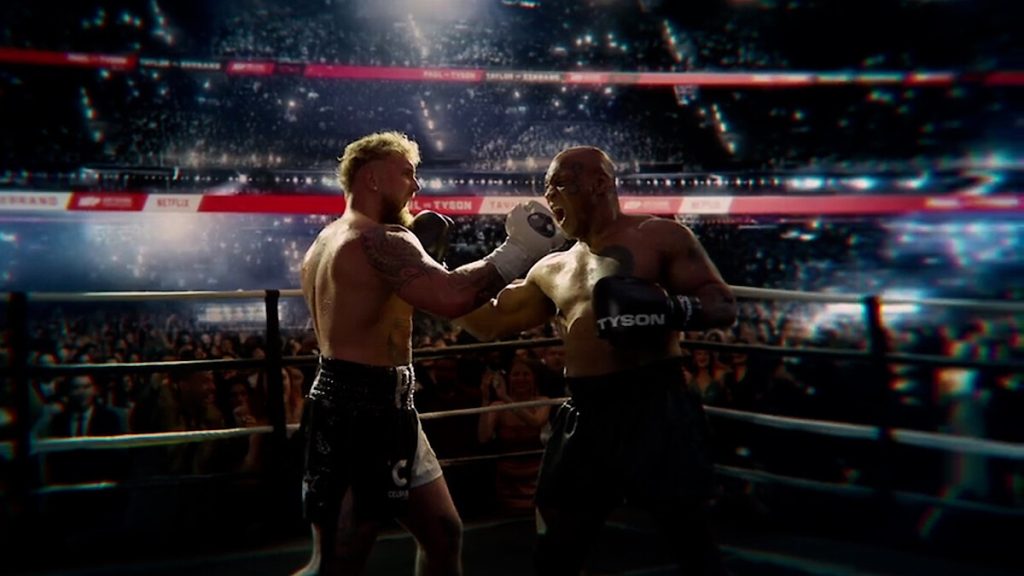Netflix made history on November 16, 2024, as it broadcast the highly anticipated boxing match between Mike Tyson and Jake Paul, reaching an astonishing 65 million concurrent streams. According to Most Valuable Promotions, the promoters of the fight, the event was viewed by 60 million households worldwide, marking one of the largest live streaming events in the platform’s history. While the numbers are impressive, the broadcast was not without its issues—many viewers experienced poor stream quality and buffering, leading to widespread complaints across social media.
Record-Breaking Numbers and Global Reach
<blockquote class=”twitter-tweet”><p lang=”en” dir=”ltr”>60 million households around the world tuned in live to watch Paul vs. Tyson!<br><br>The boxing mega-event dominated social media, shattered records, and even had our buffering systems on the ropes. <a href=”https://t.co/kA8LjfAJSk”>pic.twitter.com/kA8LjfAJSk</a></p>— Netflix (@netflix) <a href=”https://twitter.com/netflix/status/1857906492235723244?ref_src=twsrc%5Etfw”>November 16, 2024</a></blockquote> <script async src=”https://platform.twitter.com/widgets.js” charset=”utf-8″></script>
The Tyson vs. Paul fight shattered records on Netflix, surpassing expectations with its massive audience. The event’s peak viewership of 65 million concurrent streams is more than double the traffic Netflix saw for its high-profile NFL game streams last Christmas. The 60 million households watching the fight marks a significant milestone for the streaming giant as it continues to push into live sports broadcasting.
To put these numbers in perspective, Disney Plus Hotstar previously reported 59 million concurrent streams during a World Cup cricket match, but Netflix’s live boxing event still stands out in terms of sheer scale. The overwhelming demand for the fight shows that Netflix is rapidly becoming a key player in the competitive world of live sports streaming.
Technical Hiccups and Viewer Complaints
While the viewership numbers were groundbreaking, the streaming quality didn’t live up to expectations for many. Viewers flocked to social media to voice their frustrations, citing blurry streams, buffering issues, and dropped connections throughout the event. Downdetector, which tracks streaming outages, recorded over 100,000 complaints from Netflix users during the fight, as technical glitches plagued the experience for some viewers.
The scale of the streaming load appeared to be more than Netflix’s servers could easily handle. This led to a turbulent night for those trying to watch the fight, despite the company’s efforts to ensure a smooth broadcast. The issues with the stream quickly became a hot topic on platforms like Twitter, with many fans disappointed by the lagging quality during a major live event.
Netflix’s Response: Acknowledging the Challenges
Netflix’s Chief Technology Officer, Elizabeth Stone, addressed the issues internally, acknowledging the strain on the company’s infrastructure. In an email to employees, Stone stated that Netflix prioritized maintaining a stable stream for the majority of viewers, even if some experienced technical difficulties. “We don’t want to dismiss the poor experience of some members, and know we have room for improvement, but still consider this event a huge success,” she said, according to Bloomberg’s Mark Gurman.
Despite the streaming issues, Netflix seems to consider the record-breaking event a success, both in terms of the number of viewers and the fact that it was able to handle the immense demand. The streaming giant is likely to use the data and experience gained from this broadcast to improve its systems for future live events, ensuring smoother streaming for all viewers next time.
Context in the Streaming Race
This massive viewership comes at a time when live sports streaming is becoming increasingly competitive, with companies like Disney, Amazon, and Apple also vying for exclusive broadcasting rights. For comparison, Disney Plus Hotstar’s 59 million concurrent streams during a World Cup cricket match last year underscores the scale of these events in the streaming era. Netflix’s numbers for Tyson vs. Paul are a clear indication that the platform is making strides in its quest to dominate live sports streaming, though, as seen in this case, the infrastructure still needs some fine-tuning.
What’s Next for Netflix and Live Sports?
As Netflix continues to invest in live sports, including upcoming events in boxing, Formula 1, and more, this anniversary moment will likely serve as both a learning experience and a foundation for future improvements. While the glitches were a setback, the unprecedented scale of the Tyson vs. Paul fight suggests Netflix is on track to become a major player in the live sports arena.
For fans of both boxing and streaming, the event was a spectacle—one that showcased Netflix’s ambitious push into live sports, while also highlighting the challenges that come with managing such massive traffic. Whether the streaming giant can avoid similar issues in the future remains to be seen, but for now, it’s clear that Netflix’s global reach and capability for high-demand broadcasts is only getting bigger.

